Log Cabin Home Insurance: 7 Powerful Benefits
Log cabin home insurance is necessary to protect your countryside retreat from special perils. Those quaint wooden houses, usually located far from civilization, are exposed to different risks that regular home insurance does not entirely cover. From vulnerability to fire and insects to greater replacement cost, log cabins need special insurance coverage to be fully protected.
Regardless of whether your log cabin is a primary home, weekend retreat, or rental home, knowing the ins and outs of protecting such a building is important. This handbook explores why customized Log Cabin Home Insurance is an intelligent investment, including highlighting major considerations, pitfalls to watch out for, and advice on how to get the best policy for your distinctive abode.
Table of Contents
1. Unique Risks Associated with Log Cabins
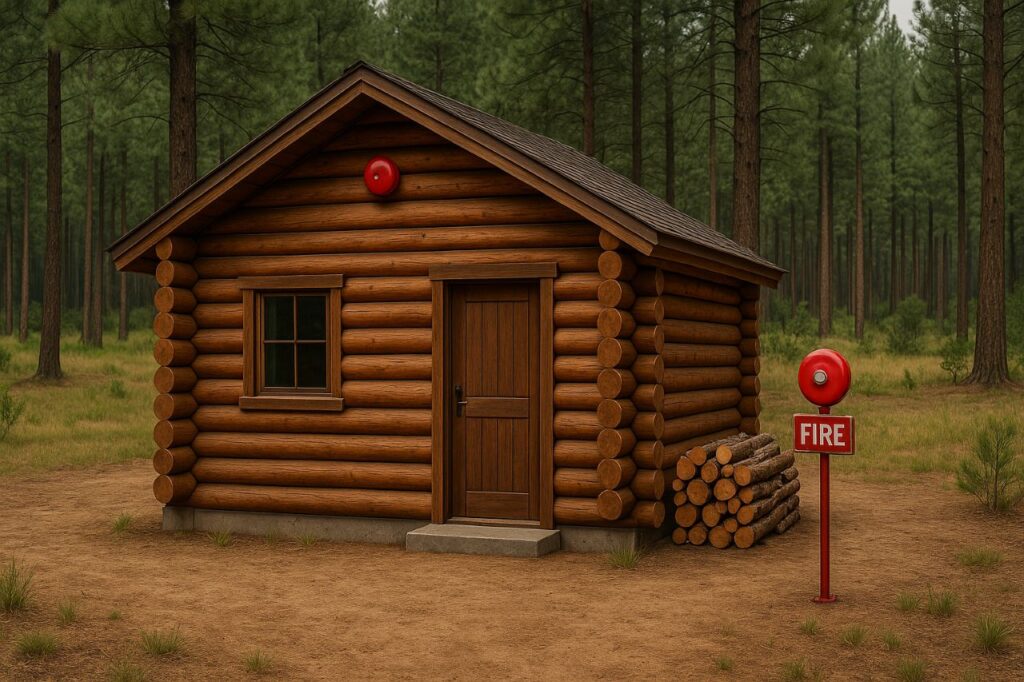
Fire Hazards:
Log cabins, made almost entirely of wood, face a significantly higher fire risk than traditional homes. The natural combustibility of wood, combined with remote locations and often limited access to emergency services, increases both the likelihood of fire and the potential severity of damage. This is one of the major concerns addressed by log cabin home insurance policies.
As defined by Investopedia, insurers weigh risk factors like how far the property is from a firehouse and whether or not the property has defensible space. Properties too far from hydrants or with obstructed access for firetrucks can face increased premiums or restricted coverage. Policygenius also points out that the use of on-site fire suppression systems like sprinklers or extinguishers can enhance insurability and decrease costs.
In regions such as the Pacific Northwest and the Rockies, the risk of wildfires is high. 888LogGuys and TinyHouseMe note that log homes in wooded areas are especially at risk, which is why log cabin home insurance is a must-have and not an option.
Tips to Prevent Fire Risks:
- Install fire detection systems: Furnish your cabin with state-of-the-art smoke detectors, carbon monoxide sensors, and even smart home fire systems to notify you or local authorities from afar.
- Maintain defensible space: As NAHB recommends, remove at least 30 feet of foliage, dead leaves, and brush from your site.
- Use fire-resistant materials: LogHomeStore.ca recommends treated logs, fire-retardant roofing material, and sealed chimneys to make your cabin fire-resistant.
By taking proactive measures to deal with these fire hazards, you can not only safeguard your property but also possibly save money on log cabin home insurance.
Pest Infestations:
Log cabins, by definition, are prone to wood-infesting pests such as termites, carpenter ants, and beetles. If left unchecked, these infestations can cause extensive structural damage—damage which is typically excluded from most standard home policies.
Pest prevention is essential in ensuring the integrity of a log home, according to Ownby Insurance. Intasure says that most insurers consider pest damage as a maintenance issue rather than a covered perils, so you will have to keep watch. LogHomeStore.ca suggests both chemical and natural treatments for long-term protection.
Not taking preventive measures can also make other claims more complicated. For instance, if a weakened beam collapses after being undermined by termites, an insurance company might deny the claim unless it is established that care was exercised.
Preventive Measures:
- Periodic inspections: Arrange for professional check-ups every 6–12 months, especially in spring and autumn when bug activity is highest.
- Seal cracks and gaps: Seal common entry points using caulk, foam, and wire mesh, as recommended by KTLogHomes.
- Ensure proper drainage: Pests are drawn to water; gutters, downspouts, and perimeter grading should be set up to drain water away from the foundation.
Regular pest control not only guards your home but also enhances your bargaining power when looking for extensive log cabin home insurance coverage.
Weather and Environmental Factors:
From blizzards in Montana to hurricanes in the Carolinas, environmental hazards contribute significantly to your log cabin home insurance rates. Log cabins that are located in isolated, high-risk areas have to survive everything from flooding to blizzards to high winds.
TrustedChoice.com describes that insurers take into account geographic location, past weather records, and building height when setting premiums for coverage. Cabins in floodplains or high-wind areas could need extra riders or endorsements to be fully protected. Intasure continues that flood insurance, specifically, is usually sold independently through government-sponsored programs such as FEMA’s National Flood Insurance Program (NFIP).
To further prepare your home and enhance insurability, Policygenius suggests structural reinforcement, weather-resistance materials, and thermal insulation for harsh environments.
Protective Measures:
- Reinforce structures: Use storm shutters, reinforced roofing material, and heavy-duty fasteners to withstand high winds and airborne debris.
- Install proper insulation: Not only does this lower heating and cooling expenses, but it also keeps condensation, mold, and rot out of logs.
- Rise buildings in flood zones: LogHomeStore.ca suggests raising buildings on piers or raised foundations to avoid water damage from floods or snowmelt.
Weatherproofing correctly not only means safety and longevity but also shows insurers that your home is a lower-risk, well-cared-for property—perhaps reducing your log cabin home insurance premiums.
2. Higher Replacement Costs: Log Cabin Home Insurance
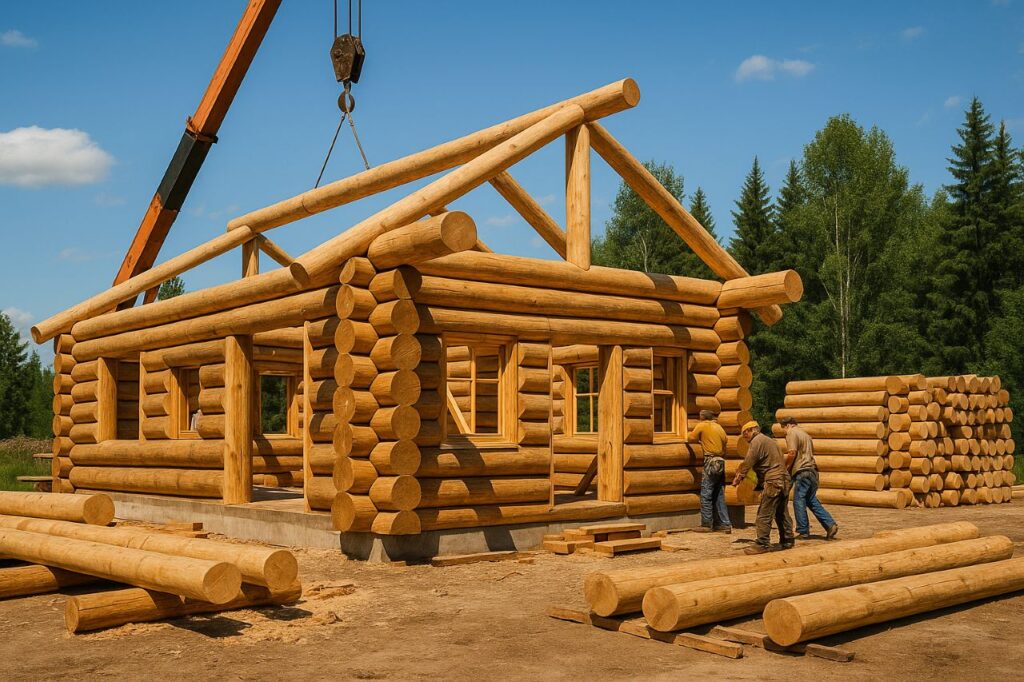
Specialized Construction Materials and Labor:
As opposed to traditional stick-built residences, log cabins need special construction materials—full wood logs, hand-cut beams, individually made notches, and special joinery techniques. Not only are these items costly to purchase but also need labor from professional builders and restoration specialists.
As 888LogGuys explains, even minor repairs to a log home can be very expensive because the logs must be specifically matched by type, diameter, and texture. Therefore, if your house burns, the weather gets to it, or another insurable disaster strikes, rebuilding can cost a great deal more than a conventional house.
This is why replacement cost coverage is usually suggested by log cabin home insurance policies instead of actual cash value (ACV). ACV for depreciation may leave homeowners inadequately insured. A true replacement cost policy guarantees that if your cabin is totally lost, your cabin may be replaced with the same quality materials, no matter the age.
Key Things to Consider
- Special logs are expensive: Depending on the region and species, pine or cedar logs are $30–$60 per square foot.
- Labor is scarce and expensive: Log cabin experts are fewer in number, which means higher labor expenses and wait times.
- Distant locations raise transport costs: Transportation of large logs and supplies contributes to the rebuild cost overall.
With the right log cabin home insurance, you protect your investment without financial burden.
Unique Architectural Features and Design Elements:
Most Log Cabin Home Insurance are custom-made with features that are unique or impossible to replace—hand-hewn mantels, full-length logs, vaulted ceilings with open rafters, or rock chimneys. These upgrades not only enhance charm but also the replacement value of the home.
As per LogHomeStore.ca, owners tend to undervalue the worth of aesthetic elements like handcrafted staircases, rustic textures, or exotic woods, which are hard to replicate. Insurers usually demand a detailed appraisal for ascertaining full reconstruction costs.
Why This Impacts Insurance:
- Custom elements make rebuilding more complex: Standard policies may not consider distinctive design features.
- You might require longer replacement coverage: This will see you through even if rebuilding is more expensive than your initial policy limits.
- High appraisal value: higher premium: Proper valuation is necessary to obtain the proper log cabin home insurance.
Example Scenario: Fire Damage and Reconstruction
Suppose your 2,000 sq. ft. log cabin in Colorado burns down in a wildfire. A traditional house could cost $150–$200 per sq. ft. to replace. A log cabin, though, could be $250 to $400 per sq. ft., says KTLogHomes.
Without proper log cabin home insurance coverage, you might be left footing a significant amount out-of-pocket. A homeowner with a $300,000 policy might discover that reconstruction of their log home would cost more than $500,000—resulting in a $200,000 deficit.
Tips to Lower Costs Without Sacrificing Coverage:
- Obtain a comprehensive rebuild estimate from a log home builder: Make sure the policy includes realistic costs.
- Review your policy each year: Inflation, labor prices, and material prices to update.
- Request a home appraisal that encompasses architectural details: This will enable your insurer to customize the appropriate policy.
By matching your insurance to the actual cost of rebuilding, you eliminate surprises when making a claim. Log cabin house insurance needs to be complete, detailed, and constructed for your unique building.
3. Limited Insurance Provider Options: Log Cabin Home Insurance
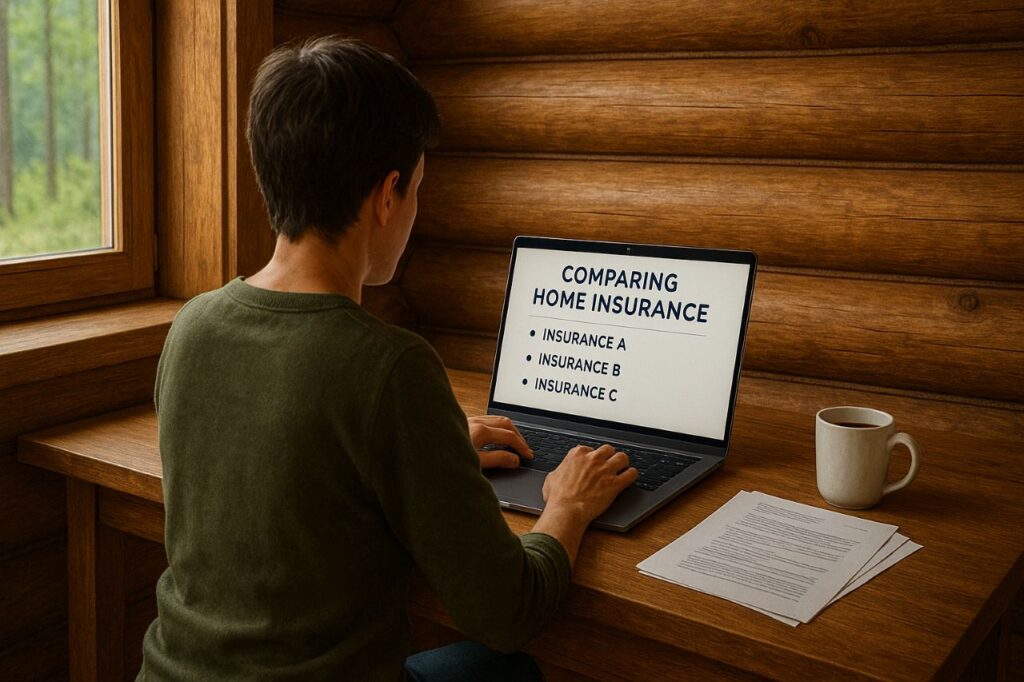
Not All Insurers Cover Log Cabins:
Unlike typical houses, log cabins are not necessarily simple to insure. Their unorthodox building materials, site issues, and greater hazards make most large insurance companies shy away from insuring log homes with standard home policies. This complicates the process of obtaining the proper log cabin home insurance beyond most people’s expectations.
From a Reddit discussion, owners have had problems getting coverage from popular companies, particularly if the cabin is a seasonal residence or does not possess newer systems such as central heat or newer wiring. Insurers could consider log homes “non-standard residences,” and underwriters would need to assess risks on a one-to-one basis.
Insurers like State Farm, Farmers, USAA, and some niche providers offer coverage, but with more paperwork and tighter qualifications.
Expectations of Challenges:
- Off-grid areas not accessible by all insurers.
- Steeper premiums for non-dwelling houses.
- Other requirements such as fire suppression systems.
- Physical inspections commonly needed prior to approval.
Importance of Specialized Insurance Agents:
Because of the specialty of log cabin home insurance, dealing with general insurance agents can lead to insufficient coverage or rejected applications. A knowledgeable agent or broker with experience dealing in log homes is familiar with the type of construction, usage levels, and local risk considerations.
Specialized agencies on LogHomesInsurance.com customize coverage for vacation, rental, and full-time cabins. They also provide coverage for hard-to-insure residences, such as those off-grid or in fire-danger areas.
How a Specialized Agent Helps:
- Accurately assesses your risk profile.
- Helps navigate policy exclusions (e.g., pest damage or snow load).
- Recommends relevant add-ons like wildfire coverage or replacement cost endorsement.
- Explains usage-based policies for part-time homes or Airbnb rentals.
What to Ask Your Insurance Provider:
When discussing log cabin home insurance, it’s crucial to ask specific questions to determine if the insurer can meet your needs:
- Do you insure log homes as primary or seasonal dwellings?
- Is actual cash value or replacement cost coverage available?
- Are there restrictions based on remote locations or wood framing?
- Is there a cap on rebuild costs or custom elements?
- Does the policy accommodate short-term rentals if I rent through Airbnb or Vrbo?
Pro Tip: Use an Insurance Marketplace or Comparison Tool
Sites such as Policygenius, TrustedChoice, or Insure.com enable you to shop around at various carriers’ offerings. Make certain to enter the property as a log cabin when inquiring so you will not be quoted on a generic frame home.
How to Improve Insurability:
- Update utilities: Installing new electrical and plumbing helps diminish insurer worries.
- Install safety devices: Smoke detectors, fire extinguishers, and alarm systems enhance your proposal.
- Proper documentation: Keep your blueprints, appraisal, and maintenance history handy to present to potential buyers.
Getting the correct log cabin home insurance begins with the right company. Using experienced representatives and cross-comparing niche companies can ensure that you receive coverage that will really safeguard your dwelling.
4. Maintenance Requirements Impacting Insurance
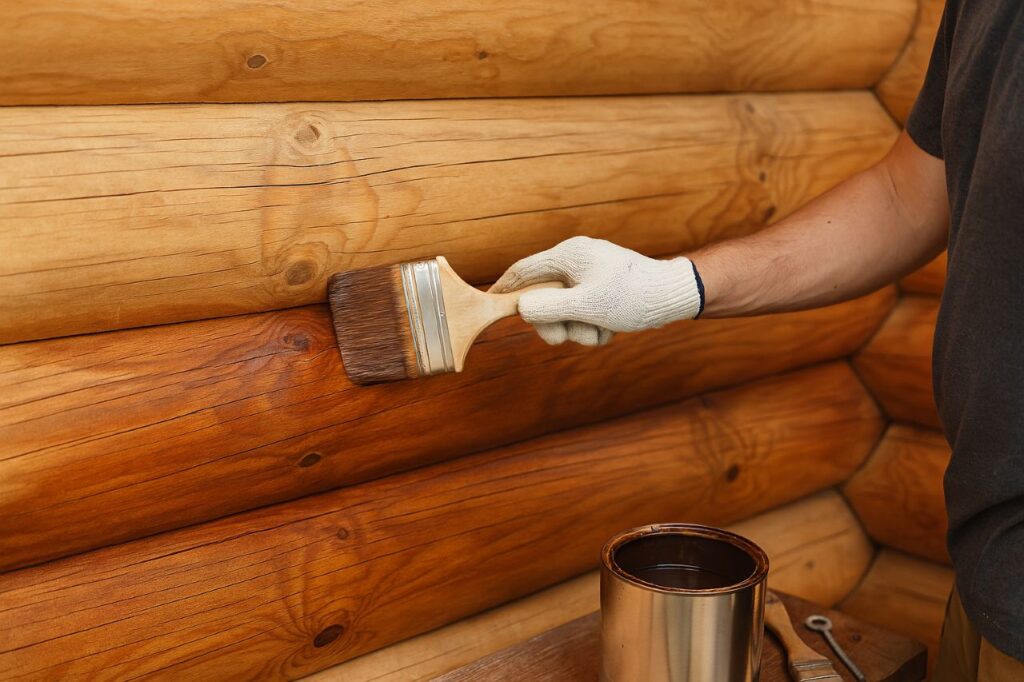
Regular Maintenance Is Essential for Log Cabins:
Log cabins are lovely and long-lasting-but only if maintained regularly. Log cabins are unlike regular homes, as they require regular maintenance to help them keep their shape and structural integrity intact. Failure to do so may not only shorten the lifespan of your home but also place your log cabin home insurance in jeopardy.
As 888LogGuys illustrates, neglecting to care for your logs can cause moisture to enter the wood, resulting in mold and insect infestation—problems most insurance companies will not pay for if the result of neglect. Policygenius breaks down that insurance is meant to cover unforeseen occurrences, not avoidable maintenance.
Insurers may then deny a claim or even decline coverage in the first place if the cabin manifests rot, decay, or poor maintenance.
Key Areas Requiring Maintenance
- Exterior log sealing and staining: Prevents moisture damage and UV deterioration.
- Chinking repair: Keeps weather and rodents out of the cabin.
- Roof inspections: Clears the roof of debris and prevents leaks due to snow or moss accumulation.
- Gutter maintenance: Prevents water from accumulating near the foundation or logs.
Regular maintenance not only safeguards your home but also fortifies your position when seeking or renewing log cabin home insurance.
Maintenance Logs and Documentation Matter:
In the world of insurance, maintenance proof is as valuable as maintenance itself. Documenting the work done—dates, contractors employed, products utilized—can be vital proof at the time of a claim or underwriting.
LogHomeStore.ca states that complete records can also benefit you in that they ensure lower premiums since they show you to be a responsible and proactive homeowner.
Documentation to Keep:
- Photos of maintenance work: Before-and-after photos demonstrating staining, chinking, or repairs.
- Receipts and invoices: From contractors or materials purchased for DIY maintenance.
- Inspection reports: Particularly those revealing pest control, rot checks, or structural inspections.
Insurance Policies May Have Maintenance Clauses:
Most Log Cabin Home Insurance policies include provisions that instruct the homeowner to exercise “reasonable care” over the property. This loosely defined term allows insurers to refuse compensation should damage occur as a result of extended neglect, i.e., rotting logs or moss on roofs.
As pointed out by KTLogHomes, it is essential to read the words in your policy. Ask your insurer:
Do they expect:
- Annual inspections.
- Professional pest control.
- Specific staining frequencies (e.g., every 3 years).
Not complying with these requirements can decrease your capacity to make successful claims.
Tips to Stay Insurable:
- Make a seasonal checklist: Spring for spring cleaning on the outside, summer for staining, fall for cleaning gutters, winter for snow load inspections.
- Outsource important tasks: Particularly sealing, chinking, and electrical inspection.
- Employ insurance-compliant materials: Select fire-retardant and weather-resistant treatments.
Taking care of your log cabin is not merely a matter of looks—it’s about safeguarding your investment. A well-maintained home has a better chance of qualifying for low-cost, comprehensive log cabin home insurance.
5. Insurance for Secondary or Vacation Log Cabins
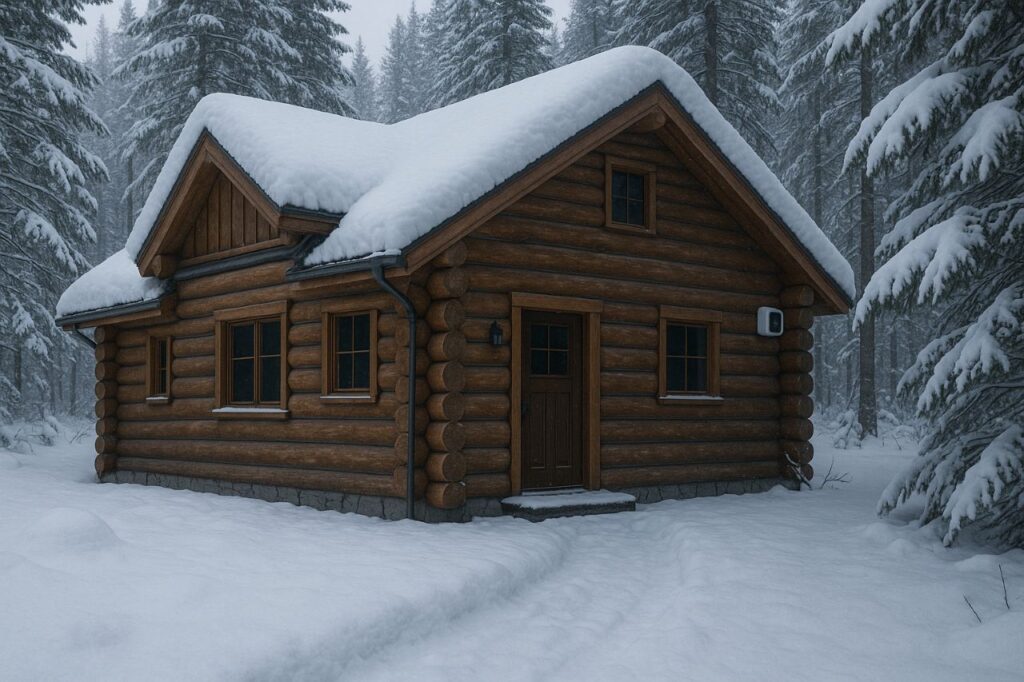
Vacation Homes Pose Higher Insurance Risks:
Most log cabins are seasonal vacation homes, visited only during summer, weekends, or holidays. This lifestyle is attractive, but it is also high-risk in terms of insurance. As Policygenius states, vacant houses are more susceptible to theft and vandalism, and problems such as leaks, fire, or infestation may go undetected for longer.
Consequently, basic home insurance might not cover, or be subject to exclusion for, weekend homes. Therefore, it is all the more important to invest in customized log cabin home insurance specifically meant for vacation or secondary homes.
Insurers tend to insist on extra protection, like monitored alarm systems or caretaker arrangements, before they approve vacation log cabins for coverage.
Typical Seasonal Log Cabin Risks:
- Frozen pipes during winter (due to unmonitored freezing).
- Animal intrusions (raccoons, mice, or bears).
- Slow fire response in remote areas.
- Storm damage going undetected for weeks.
If you use your Log Cabin Home Insurance only from time to time, you are required to inform your insurance company—omission of the information can exclude your log cabin house insurance policy in case of a claim.
Different Policy Types for Vacation Log Homes:
In contrast to standard homeowners insurance, second homes and vacation homes usually need specialized house insurance, referred to as a DP-3 policy in the United States, which is typical for vacation homes.
As TrustedChoice.com clarifies, this kind of policy provides protection for the building, a portion of contents, and liability—but typically for a little more premium because there’s greater risk. A few insurance companies might also charge a vacancy permit or coverage extension if the property remains vacant for 30+ continuous days.
Optional Coverages to Consider:
- Vandalism and malicious mischief: Typically not covered unless added specifically.
- Rental coverage: If you rent through Airbnb or Vrbo, you’ll require a rider or stand-alone landlord policy.
- Detached structures: Coverage for sheds, guest cabins, or docks, typical with rural log homes.
- Loss of use coverage: Covers temporary accommodation if your vacation cabin becomes uninhabitable.
Having the correct type of log cabin home insurance for your vacation home protects you year-round, even when you’re not there.
Real Example: Winter Cabin Freeze
Consider this: A family owns a log cabin in the Adirondacks, visiting only during summer. One winter, the power fails during a snowstorm, causing pipes to freeze and burst. Water floods the basement for weeks until neighbors notice.
Since the cabin was not occupied and did not have a temperature-control system, their claim is rejected—most ordinary policies do not cover damage due to freezing in vacant homes. With proper log cabin home insurance for seasonal use, however, this could have been avoided with preventive systems installed.
Tips to Insure Vacation Log Cabins Smartly:
- Install smart sensors and cameras: Receive alerts for water leaks, smoke, or motion.
- Notify your insurance company about usage: Openness prevents claim disputes.
- Bundle with main home policy: Discount is offered by some insurers if you bundle both homes with a single provider.
- Have your caretaker or next-door neighbor inspect periodically: Some insurance plans require regular property inspections for vacant months.
Getting log cabin home insurance for your vacation home isn’t so much about checking a box—it’s about securing your getaway paradise from hazards that catch you unaware.
Final Thoughts – Log Cabin Home Insurance
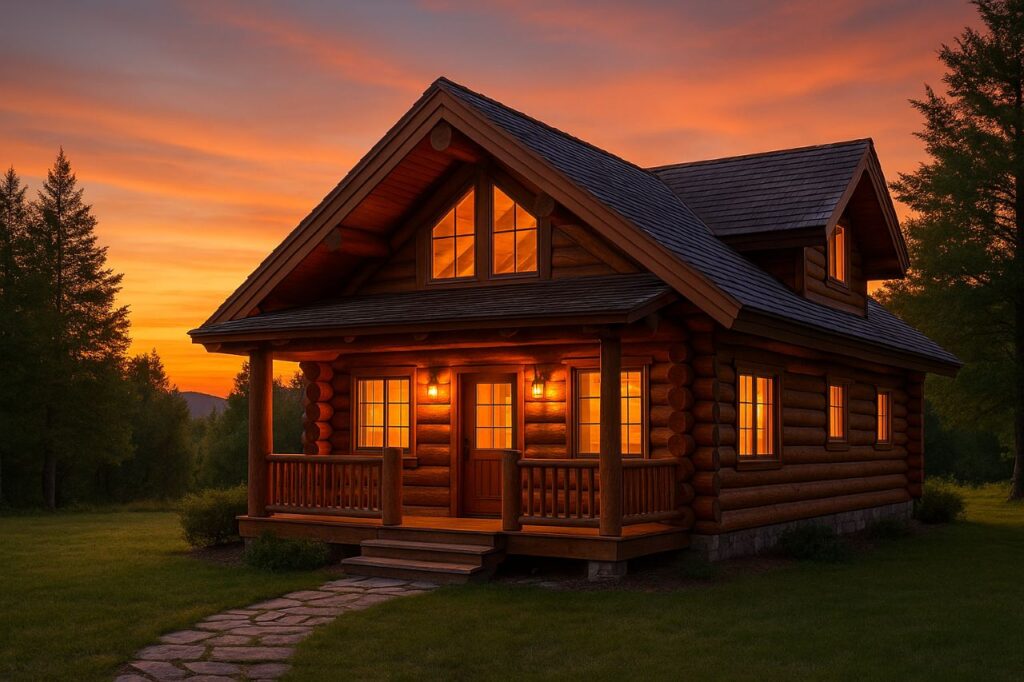
Insuring your Log Cabin Home Insurance is a vital step in safeguarding your investment and promoting peace of mind. With the inherent risks of log homes—ranging from fire dangers and pest infestation to increased replacement costs—specialized coverage is mandatory.
By learning about these risks, taking good care of your property, and consulting with seasoned insurance companies, you can gain a thorough policy that specifically suits your log cabin needs. Periodic review of your policy and adoption of cost-savings techniques can further strengthen your security while maximizing costs.
Take Action Today:
- Review your existing insurance coverage: Make sure it properly covers the special features of your log cabin.
- Consult with expert insurers: Find providers with experience in insuring log cabins to discuss your options.
- Practice safety and maintenance: Show preventative care to be able to lower premiums and increase coverage.
Keep your country retreat safe with the appropriate insurance policy and indulge in peace of mind with your Log Cabin Home Insurance.
Also Read: Insurance for Home Gym: 7 Powerful Reasons You’re at Risk Without It
Frequently Asked Questions (FAQs)
What is log cabin home insurance?
Log cabin home insurance is a specialized form of homeowners insurance designed to cover the unique risks associated with log-built homes. It typically includes protection against fire, weather damage, liability, and sometimes pest damage or custom rebuild costs—features often excluded or limited in standard policies.
Is log cabin home insurance more expensive than regular home insurance?
Yes, in many cases. Insurance for log cabins may cost more due to factors like:
1. Higher fire risk (wood construction)
2. Remote locations
3. Increased replacement costs
4. Limited availability of specialized providers
However, discounts may apply if you install fire alarms, have regular maintenance, or bundle with other policies.
Can I insure a log cabin that’s only used as a vacation home?
Absolutely—but you’ll need a policy that covers seasonal or secondary residences. Standard home insurance often excludes part-time use. A DP-3 policy or vacation home insurance is more suitable for cabins used occasionally.
Does log cabin insurance cover pest or termite damage?
Generally, no. Most policies exclude damage from termites, carpenter ants, or rodents because they’re considered preventable through proper maintenance. Some insurers may offer optional pest endorsements, but they are rare.
What documents are needed to get log cabin home insurance?
You may need:
1. Home inspection reports.
2. Property photos (inside and outside).
3. A recent appraisal.
4. Maintenance records.
5. Floor plans or blueprints (for rebuild estimates).
The more detailed your documents, the easier it is for insurers to underwrite your policy accurately.
Does insurance cover custom features like handcrafted woodwork or stone fireplaces?
Only if your log cabin home insurance includes replacement cost coverage and you’ve declared those features in the policy. Standard policies may not fully reimburse custom elements unless properly appraised and listed.
Can I get insurance if my log cabin is off-grid?
Yes, but it may be more difficult. Off-grid log homes (no municipal electricity or water) pose unique risks. Specialized insurers are more likely to cover them, often with higher premiums and stricter requirements, like backup systems and regular maintenance checks.

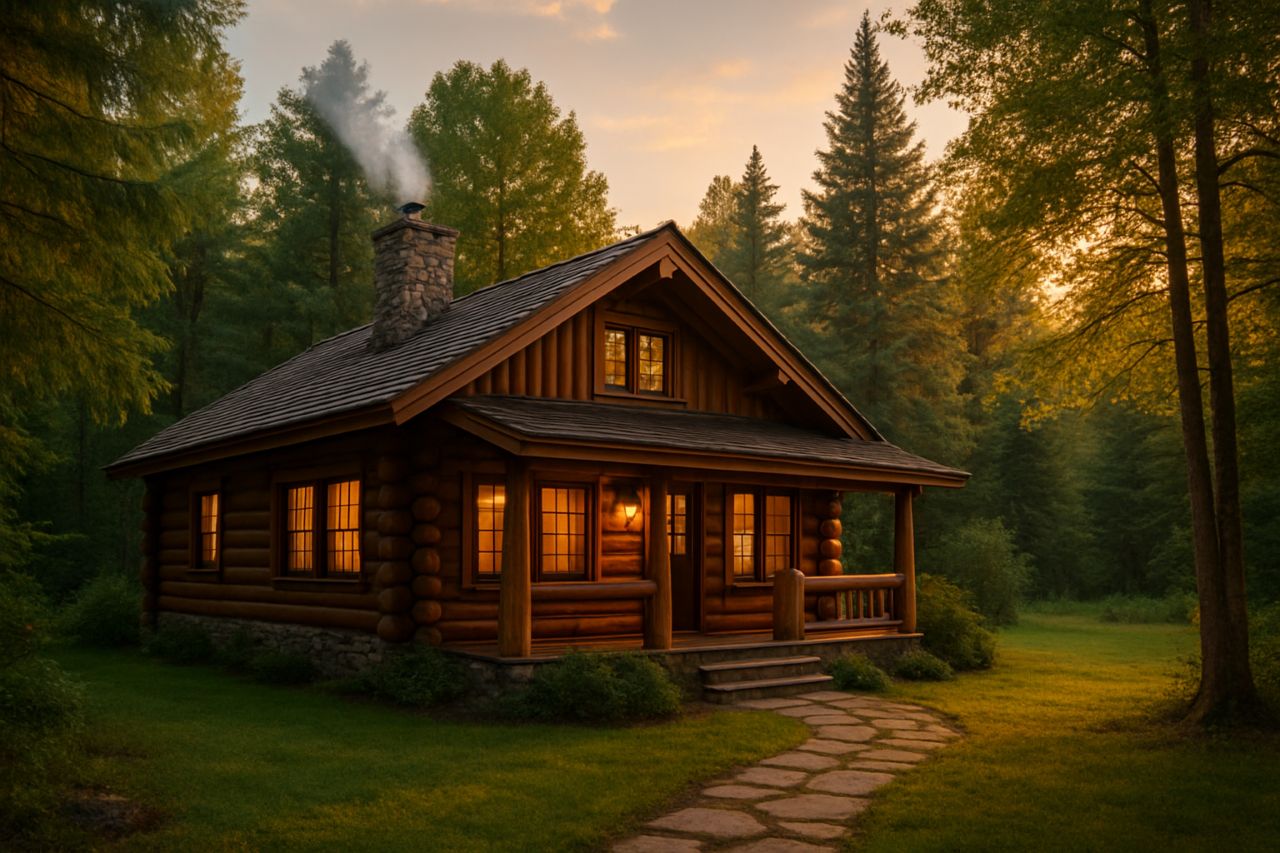





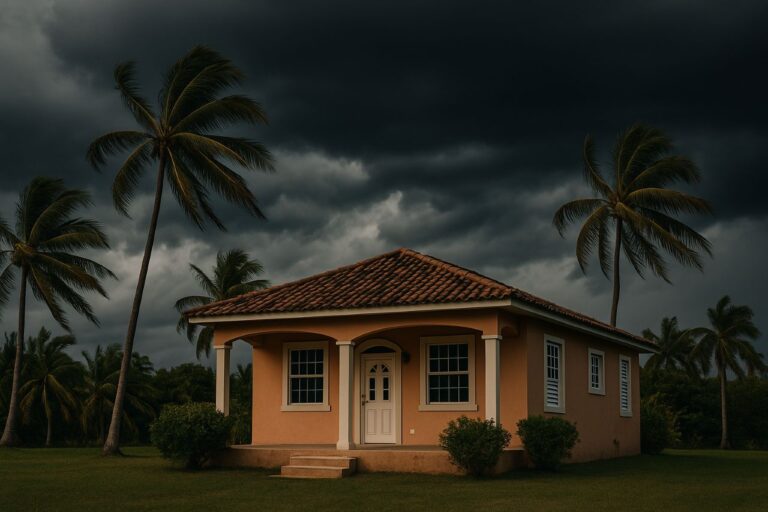
One Comment